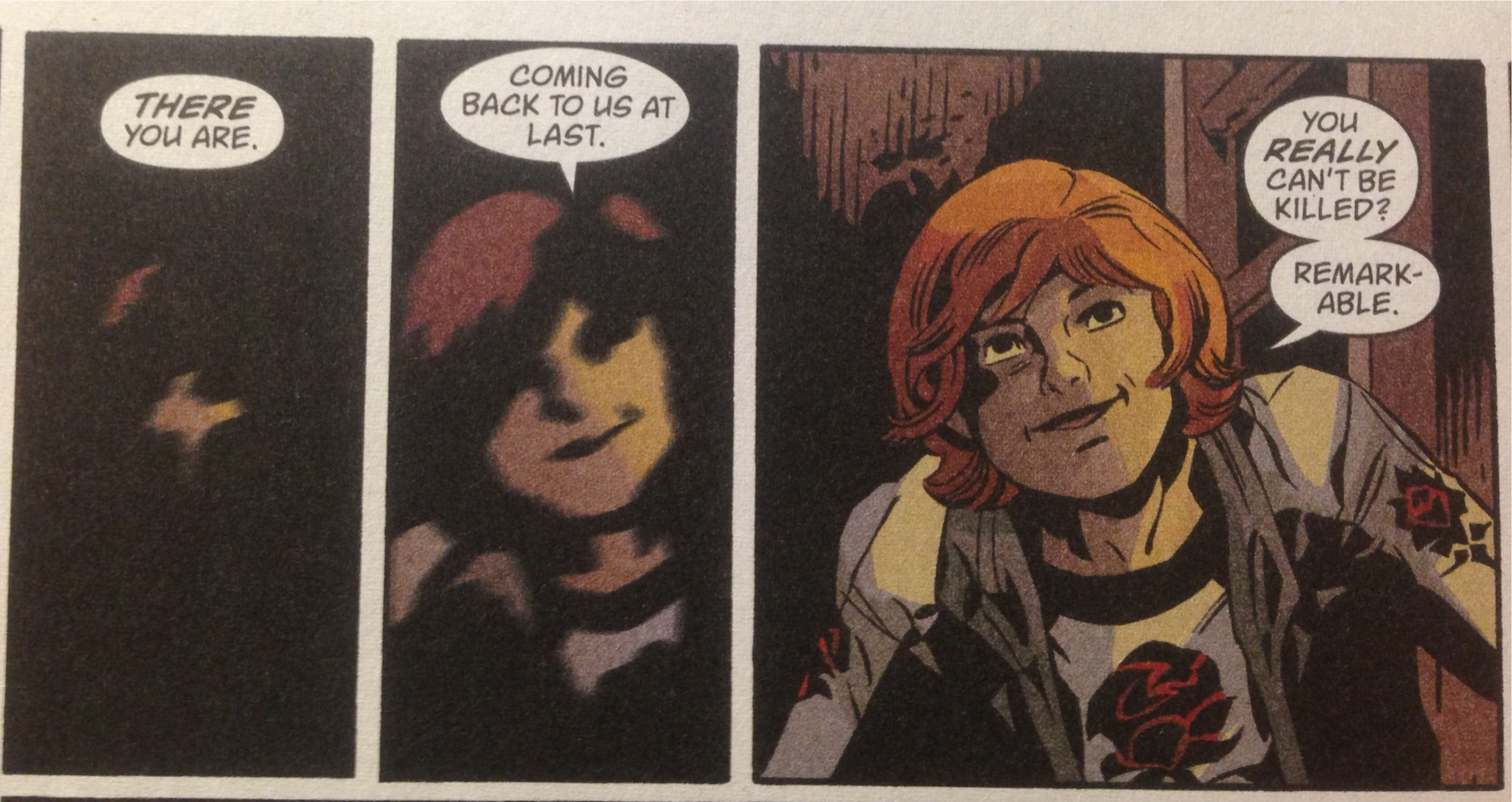“Fables” is a tough book for me to review because I am such a stark raving fan, impartiality eludes me. To me “Fables” represents the only other series to be consistently spectacular in story, character, and all the other little tools of storytelling that make a comic book fan spend an entire day reading through back issues of a series. Also? These articles were postulated to show that the two big publishers could be doing better. Yes, yes, yes “Fables” is a Vertigo book and is technically owned by DC, but that’s like saying the city of Los Angeles owns the Pantages Theatre because of zoning laws. In fact, if DC paid more attention to Vertigo they might learn something.
One of the drawbacks about being a “Fables” fan is that I have to tell new readers that they can start from any story arc and not worry about past histories. What I want to do is shake them and yell that they have to read every issue and weep about Prince Charming but exalt the Frog Prince Ambrose as the compassionate king of Sanctuary—feel the fear from the spindly needle fingers of Mister Dark while cheering Boy Blue through the lands of the Empire. In reality, every story is compartmentalized and self sustaining. You don’t need to know the intrigue and magic the Pied Piper stirred in the pages of “Peter and Max” to understand the current conflict nor would you need to know how Cinderella had her own spy escapades behind the scenes in her own book, it might even be superfluous to talk about the beautiful art in the pages of “Fairest”—okay I’ll stop. The point is that while brief mentions are made to the past, it is much more fluid and natural than more conventional books that feel the need to staple a brief synopsis in the margins. So even if you haven’t been reading every delicious issue, nothing is standing in your way.
In this issue of “Fables” they have one of the most brilliant story progressions I have seen. It involves immortality, machine guns, and cement. See? Intriguing. But really this might not have been the best issue to analyze—not that it’s a bad or boring issue. Much of it is dedicated to addressing issues of the past. But I’m not a liar; you guys just go back a few issues. Anyway, if you are a fan, this issue was packed to the brim with goodies for your eyeholes. Brandish is back and Dr. Swineheart is there to see this miraculous dead body rise from the slab. It is fantastic character development to show the doctor perhaps not truly aligned with Fabletown’s best interest. He is an arrogant, pompous man but he is also a man dedicated to his craft, always learning and preserving his work. After all, anyone who dies tarnishes his record. How freakin’ cool is that? It took all of one issue for him to flip allegiances and it seems completely natural to his character. This whole issue is choked full of character treats for truly every fan is chuffed to see Rose Red prove she is a complete badass not to be trifled with.
One of the central pillars, story wise, of this issue was Rose Red deciding to affirm her new life’s purpose. She will reform the Knights of the Round Table. The mere name has resonance and connotation abound and every character involved feels the reverence and relevance, though each in their own way because everyone knows Reynard the fox doesn’t come straight out and admit he’s pleased to be asked. And that’s the thing; this is a transition issue, wrapping up the tangles from the previous story arc while introducing the exciting tidbits for the next. It worked, I am shaking with anticipation, I just wish I didn’t have to shake for an entire month until the next issue.
Do I have to compare it to “Invincible”? I do? Fine. The trouble with that comparison is the limited tools in “Invincible’”s tool box. It has been established that “Fables” deals with all conventions of fiction and literature—including superheroes! Meanwhile, “Invincible” is confined to speaking in the common idiom of superhero books. Even if I were to compare artistic styling I would hit a wall because each book has an artist that complements their story perfectly—though I would not be opposed to a switch up like “Freaky Friday” but instead of bodies the books switch artists.




